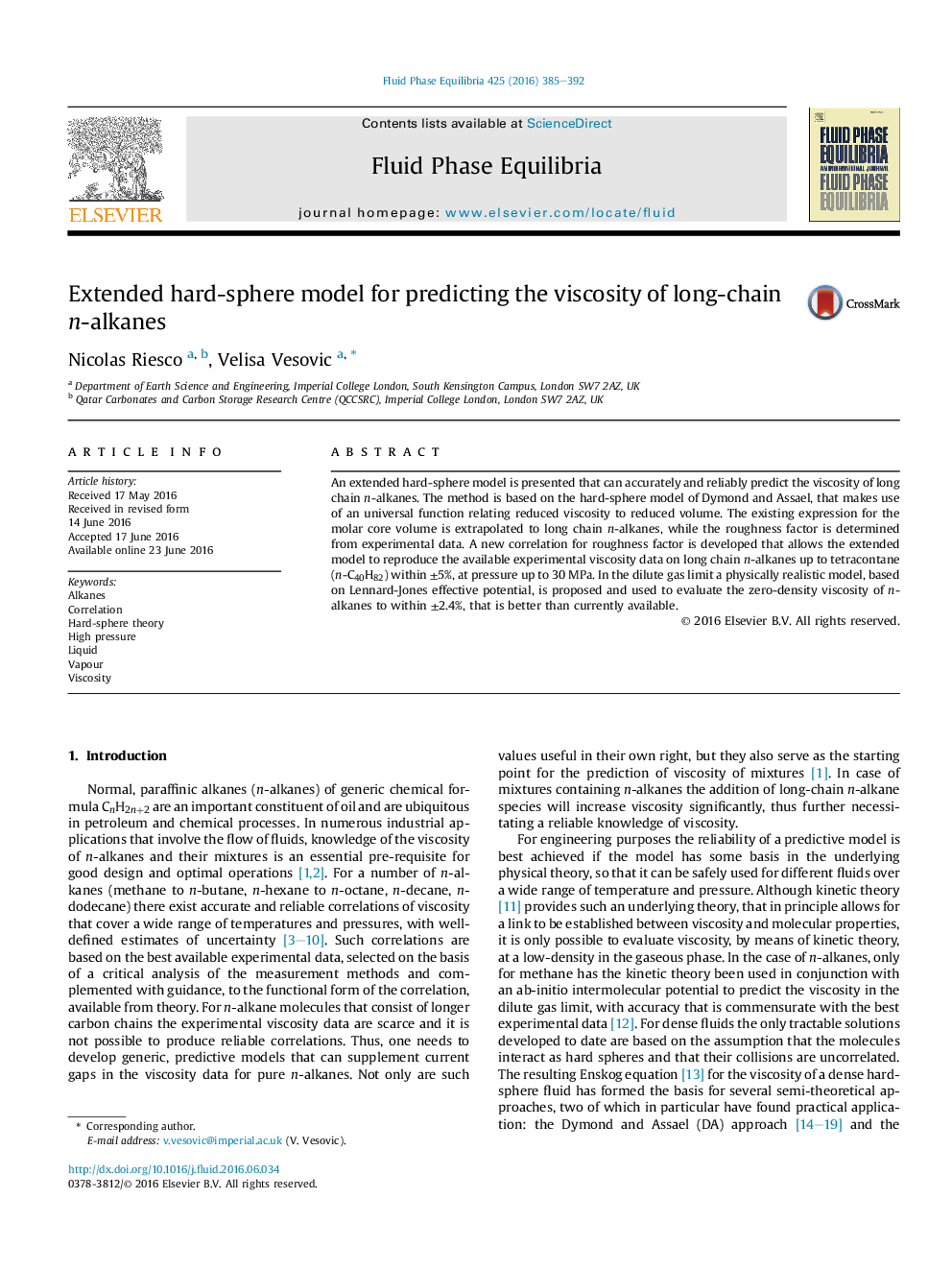| کد مقاله | کد نشریه | سال انتشار | مقاله انگلیسی | نسخه تمام متن |
|---|---|---|---|---|
| 201124 | 460533 | 2016 | 8 صفحه PDF | دانلود رایگان |
• A new model to predict the viscosity of long chain n-alkanes is developed.
• The model is based on the hard-sphere representation.
• Viscosity data are reproduced within ±5% in the range of validity of the model.
• In the dilute gas limit a supplementary, physically realistic model is proposed.
• It reproduces zero-density viscosity of n-alkanes within ±2.4%.
An extended hard-sphere model is presented that can accurately and reliably predict the viscosity of long chain n-alkanes. The method is based on the hard-sphere model of Dymond and Assael, that makes use of an universal function relating reduced viscosity to reduced volume. The existing expression for the molar core volume is extrapolated to long chain n-alkanes, while the roughness factor is determined from experimental data. A new correlation for roughness factor is developed that allows the extended model to reproduce the available experimental viscosity data on long chain n-alkanes up to tetracontane (n-C40H82) within ±5%, at pressure up to 30 MPa. In the dilute gas limit a physically realistic model, based on Lennard-Jones effective potential, is proposed and used to evaluate the zero-density viscosity of n-alkanes to within ±2.4%, that is better than currently available.
Journal: Fluid Phase Equilibria - Volume 425, 15 October 2016, Pages 385–392
